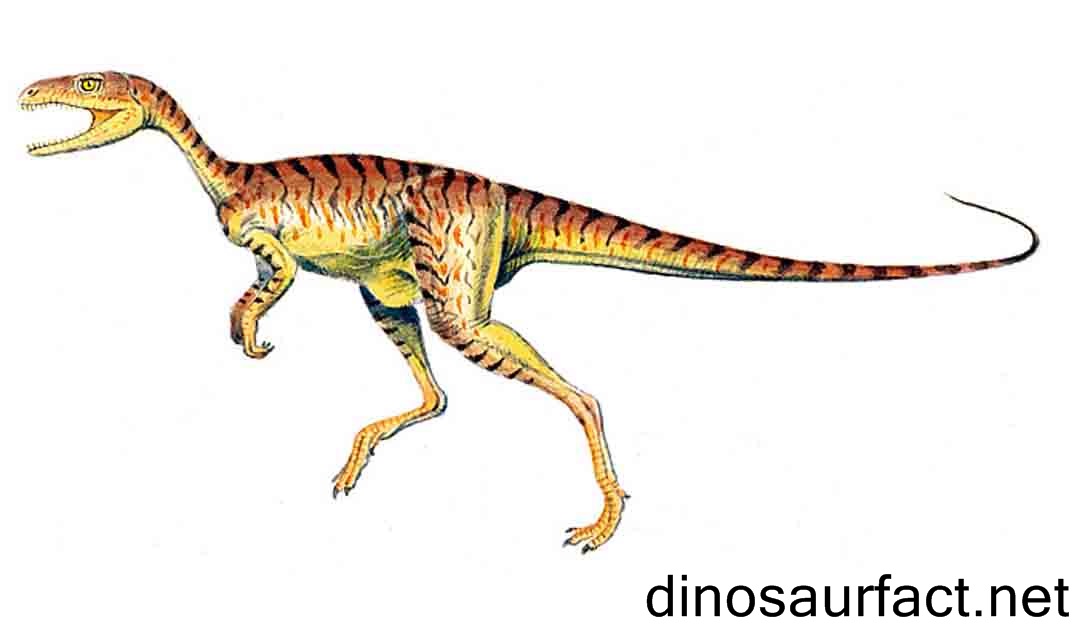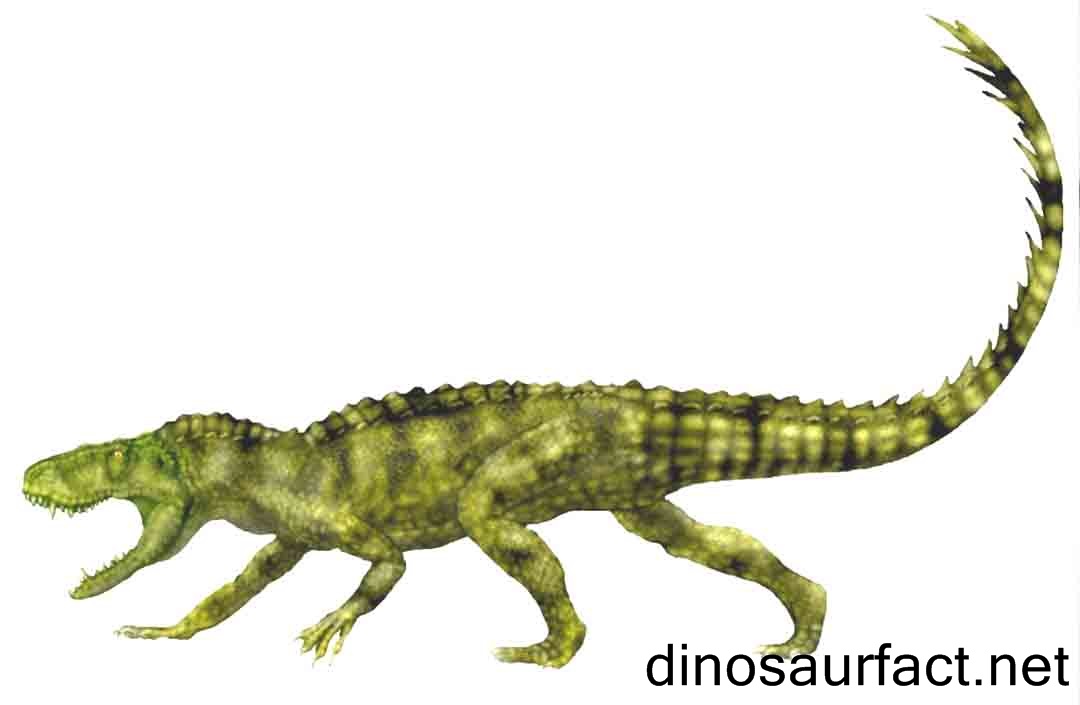 Click to visit the previous dinosaur bio
Click to visit the previous dinosaur bio
 |
|
 |
|
Kingdom: Animalia
Phylum: Chordata
Class: Reptilia
Superorder: Dinosauria
Order: Saurischia
Suborder: Theropoda
Family: Coelophysidae
Genus: Camposaurus
 |
|
 |
|
 |
|

The Caseosaurus was a terrestrial dinosaur that was present on the earth in the latter half of the Triassic Period. It was relatively short; growing to an adult height of about six and a half feet, of slender build and was carnivorous. Its extremities were long, along with its neck. It was prominently bipedal and also a strong sprinter.
It was in existence about 228 to 209 million years ago, in the Mesozoic Era. It weighed a modest fifty kilos. Although some paleontologists contend that it could grow as tall as fifteen feet, most agree that a little over six feet was it maximum stature.
The Caseosaurus fossils predominantly were discovered at the Tecovas Formation in Texas, United States. Some fossils were also found in other areas of the Dockum Group in North America, but were never conclusively linked to the Caseosaurus.
Etymology
The dinosaur was named after its discoverer, Ermine Cowles Case. The suffix ‘-saurus’ translates to ‘lizard’ in Greek. The species name C. crosbyensis was derived from the location of the fossils, Crosby County. The official name, Caseosaurus crosbyensis was ascribed by a group of scholars in 1998.
Ermine Cowles Case
E.C. Case was an American paleontologist who worked all his life to classify and organize fossils found at various sites in the red sedimentary rocks of the Texas and New Mexico regions of the Dockum group. He studied at the University of Kansas, University of Chicago; and worked at the University of Michigan. It was at Michigan that he attained renown as a prominent paleontologist.
He published many papers about the Permo-Carboniferous flora and fauna of the Paleozoic Era. He led various excavation endeavors in the Tecovas Formation, where the remains of the Caseosaurus were found. Case had a very large collection of fossils, which were discovered at multiple locations across North America. This collection is currently housed at the University of Michigan.
Case was considered a professor par excellence by students as well as faculty members at the University of Michigan. He is remembered there very fondly even today, with a commemorative lecture delivered every year.
Tecovas Formation
The Tecovas Formation is a natural environmental structure present in Texas. Its depth is about a hundred and twenty five feet. It comprises of chiefly of siltstone, clay and shale. The geological material in this region has various shades of red: brown, grey, maroon and even yellow and grey in certain areas. Hence, this formation is referred to as the ‘Red Bed’.
The age of most fossils found in this region is established to be from the late Paleozoic Era to the early Mesozoic Era.
Taxonomic Classification
The classification of the Caseosaurus has been a matter of debate since the discovery of its fossils. The journey of trying to classify the fossils has been as follows:
- Scientists, after seeing its similarities to the Chindesaurus, first classified it as a sub-species of the Chindesaurus.
- Later, however, much dissimilarity between the fossils and those of the Chindesaurus was noted. As a result, the fossils were classified under a separate genus, Caseosaurus. This was suggested by Hunt and his colleagues in 1998.
- However, more recent studies by Langer (2004) have reestablished the possibility that the Caseosaurus and Chindesaurus might just be the same species.
Recent Taxonomic Modifications
A paleontologist by the name of Victorino Herrera discovered fossils of a dinosaur in San Juan, Argentina in 1959. These fossils were later christened ‘Herrerasaurus'. Despite of these being found in a completely different continent as compared to the Caseosaurus, they bear a striking likeness.
Most scientists concur that the Caseosaurus and the Herrerasaurus are at least related if not the same species. Both of them existed around the same time period in history. It is entirely possible for the same species to co-exist at two different regions on the globe. The changes in habitat and environment can be ascribed to be the reasons for the slight differences in phenotypic characteristics.
Fossils and their features
The fossils found at the Tecovas Formation included few pieces of the hip bone. The features taken into consideration for classification are
- Presence or absence of the brevis shelf of the ilium
- Morphology of the acetabular cavity
- Morphology and position of the medial longitudinal ridge.
The open acetabulum may relate it to family Hererrasauridae, but the absence of the brevis fossa indicates otherwise. The lack of the brevis fossa is also the matter of contention for classifying these fossils as Chindesaurus.
Co-existing species
The Triassic period was preceded by a spell of extinction that eliminated more than ninety percent of the life found on earth. There is no consensus on the exact cause of this event, but the reasons are believed to be earthly geological events. Environmental changes and cataclysmic events such as volcanic activity are presumed to be the causes of this event.
Only a few dinosaurs are thought to have existed with the Caseosaurus as the Permian-Triassic extinction event eliminated most life-forms. It was this event that paved the way for the dinosaur dominance in the Jurassic period.
The following are some of the species that may have co-existed with the Caseosaurus.
- Celeophysis
- Plateosaurus
- Riojasaurus
- Chindesaurus
- Hererrasaurus
The Chindesaurus and Hererrasaurus very closely resemble the Caseosaurus. Many paleontologists speculate that they may have been sub-species, if not the same dinosaur.
Fossil Storage
Very few fossils of the Caseosaurus were discovered in the Tecovas Formation. They comprise only of pelvic girdle pieces. These are currently preserved in the University of Michigan. The university regularly appoints individuals to conserve E. C. Case’s substantial fossil collection.
Final notes about the Caseosaurus
The fossils discovered that are attributed to the Caseosaurus resemble those of other theropods. But these remains are very limited; hence they do not provide any conclusive information about the Caseosaurus. Due the scarcity of the data documented about the Caseosaurus, there is still deliberation about it being a separate species. Dinosaurs such as the Chindesaurus and the Herrerasaurus are believed to be very intimately related to the Caseosaurus.
But until further evidence is discovered, the Caseosaurus crosbyensis may be considered a separate species.
Index
Extinct Profiles
 Triassic Dinosaurs
Triassic Dinosaurs Jurassic Dinosaurs
Jurassic Dinosaurs Cretaceous Dinosaurs
Cretaceous Dinosaurs Pterosaurs
Pterosaurs Marine Reptiles
Marine Reptiles Dinosaur Extinction
Dinosaur Extinction